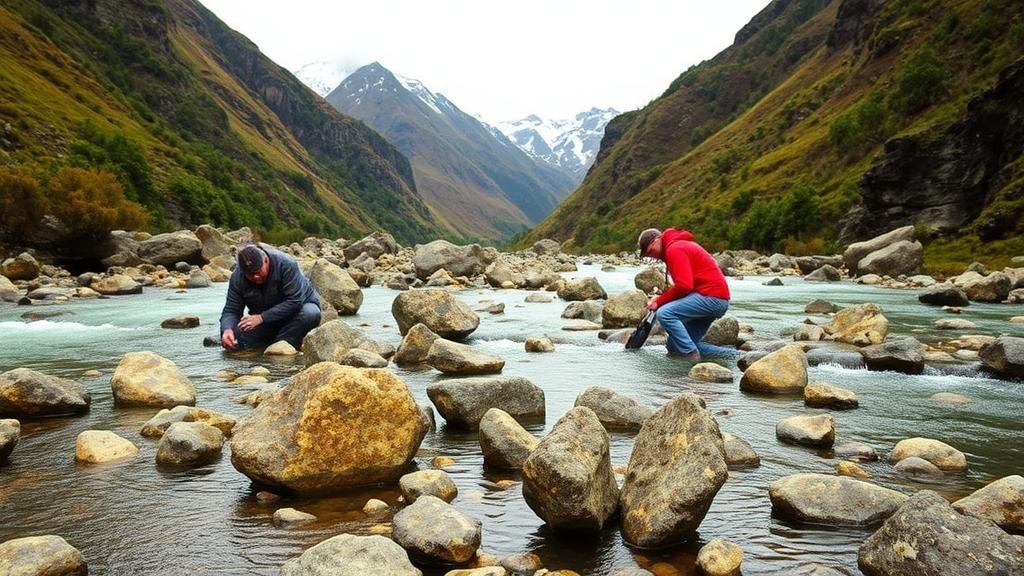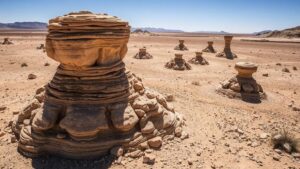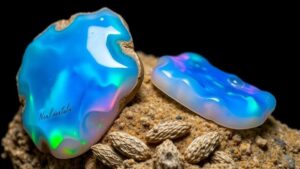Investigating hidden gold nuggets in New Zealand’s glacial rivers.
Investigating Hidden Gold Nuggets in New Zealand’s Glacial Rivers
New Zealand, with its breathtaking landscapes and diverse geological features, presents an exceptional opportunity for rockhounds and mineral collectors, particularly in the exploration of its glacial rivers. These rivers hold a treasure trove of potential gold nuggets, shaped and deposited by centuries of glacial activity. This article explores the methods, tools, and insights necessary for uncovering these hidden gems.
The Geological Context: New Zealands Glacial Landscape
New Zealands South Island is renowned for its stunning glaciers, such as the Franz Josef and Fox Glaciers, which have dramatically shaped the terrain over millennia. As glaciers move, they grind down rocks and minerals, releasing heavier particles, including gold, that have been carried downstream. According to the New Zealand Geological Survey, the Otago region alone has deposits containing an estimated 200 metric tons of gold, primarily sourced from these glacial rivers.
Understanding Gold Deposition
Gold is often found in alluvial deposits, which occur when heavier minerals settle at the bottom of river beds due to their density. In glacial rivers, the process can be further complicated by the constant movement of water and sediment. It is essential to understand certain key aspects:
- Particle Size: Gold nuggets can vary in size from fine particles to larger, more noticeable chunks. The density of gold (approximately 19.3 g/cm³) means that it will often settle into crevices or behind boulders in the river.
- Stream Velocity: Faster flowing areas may carry gold further downstream but can also lead to the accumulation of nuggets in quieter pools or near bends in the river.
Methods for Prospecting Gold Nuggets
For rockhounds keen on uncovering these elusive treasures, various prospecting methods can be employed. Each technique has its advantages and is suited to different environments and conditions.
Panning
Gold panning is perhaps the most traditional and accessible method. Collectors can use a simple pan to wash sediment collected from the riverbed, gradually separating lighter materials from the denser gold particles. The steps include:
- Gathering Material: Collect gravel and sediment from promising areas, particularly around boulders and in slower-moving sections of the river.
- Panning Technique: Fill the pan half full of sediment, submerge it in water, and shake it gently. Tilt the pan to let lighter materials wash over the edge while retaining the heavier gold particles.
Using a Sluice Box
A sluice box enhances efficiency for larger collections. It channels water through a long, narrow trough, making it easier to separate gold from gravel using riffles that trap heavier materials. Here’s how to use it effectively:
- Setup: Position the sluice box in the river with a slight angle to ensure proper water flow.
- Material Input: Feed gathered materials into the sluice box to let water carry away dirt while gold sinks behind the riffles.
Detecting with Metal Detectors
For those looking for larger nuggets buried deeper in the riverbed or on adjoining banks, metal detectors provide an advanced option. Here are a few tips:
- Choosing the Right Detector: Consider detectors designed for gold prospecting, which operate at higher frequencies to detect small gold nuggets.
- Surveying Ground: Sweep the detector over regions close to the riverbank, particularly in areas where glacial deposits are anticipated.
Safety and Environmental Considerations
Prospecting for gold, while exciting, involves environmental and safety considerations that every collector should heed. Here are some guidelines:
- Permits: Ensure you have the necessary permits, as many regions require licenses for gold prospecting activities.
- Leave No Trace: Avoid damaging the natural ecosystem. Fill in any holes made during your search to protect wildlife and plant habitats.
- Safety Gear: Always wear appropriate gear, including sturdy footwear and gloves to protect against sharp rocks and sudden changes in river conditions.
Real-World Applications and Community Engagement
Engaging with local rockhound communities can provide invaluable insights and enhance your prospecting success. Communities often share information on the best locations, techniques, and even organize group outings. Websites and forums dedicated to New Zealand’s mineral collectors can facilitate connections and foster a spirit of collaboration.
Conclusion: Your Next Adventure Awaits
Investigating glacial rivers in New Zealand for hidden gold nuggets offers a unique adventure that combines the thrill of discovery with the beauty of nature. By employing proper techniques, respecting the environment, and engaging with local communities, rockhounds can find both gold and camaraderie. So grab your gear, head to the rivers, and start your journey into the gleaming world of gold prospecting.



